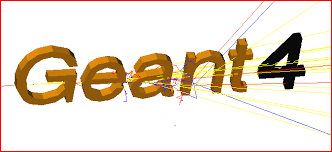Software
BINoculars
BINoculars is a tool for data reduction and analysis of large sets of surface diffraction data that have been acquired with a 2D X-ray detector. The intensity of each pixel of a 2D-detector is projected onto a 3-dimensional grid in reciprocal lattice coordinates using a binning algorithm. This allows for fast acquisition and processing of high-resolution datasets and results in a significant reduction of the size of the dataset. The subsequent analysis then proceeds in reciprocal space. It has evolved from the specific needs of the ID03 beamline at the ESRF, but it has a modular design and can be easily adjusted and extended to work with data from other beamlines or from other measurement techniques.

COD (Crystallographic Open Database)
Open-access collection of crystal structures of organic, inorganic, metal-organic compounds and minerals, excluding biopolymers. As of 2016/12/13, there are 369600 entries in the COD

DIALS
The DIALS project is a collaborativeproject to develop diffraction integration software. There are three end goals: to develop an extensible framework for the development of algorithms to analyse X-ray diffraction data; the implementation of algorithms within this framework and finally a set of user facing tools using these algorithms to allow integration of data from diffraction experiments on synchrotron and free electron sources.

DiffPy-CMI
DiffPy-CMI is a library of Python modules for robust modeling of nanostructures in crystals, nanomaterials, and amorphous materials. The software provides functionality for storage and manipulation of structure data and calculation of structure-based quantities, such as PDF, SAS, bond valence sums, atom overlaps, bond lengths, and coordinations. Most importantly the DiffPy-CMI package contains a fitting framework for combining multiple experimental inputs in a single optimization problem.

GEANT4
Toolkit for the simulation of the passage of particles through matter. Main applications: high energy, nuclear and accelerator physics, as well as studies in medical and space science.
idltomo
a graphical user interface to manage tomography data preprocessing, reconstruction and visualizaton based upon IDL and PyHST packages.
RFit2000
RFIT2000 fits X-ray and neutron reflectivity data. The search of global minima is done via successive descent from local minima. This method can be treated as a two stage loop repeated consequently. The first stage is the local minimization with the ?2 -like criterion and the second one is the descent from the most recent local minimum. Reflectivity curve is calculated with one of the methods: Kinematic, Parratt and Matrix. Matrix method works faster for films modeled with multiple repetion of one identcal structural units. Film structure is represented with the box model. Each box is characterized with the scattering density (Re and Im), thickness and roughness of the top interface.

ROD
ROD is a program that can be used to do a refinement of a surface structure using surface X-ray diffraction data. All main features one encounters on surfaces, like roughness, relaxations, reconstructions and multiple domains, are taken into account. The most essential part of ROD is the calculation of the structure factor of the surface. ROD is complemented by two utilities: ANA and AVE: ANA can be used to integrate scans and to convert these into structure factors, while AVE can sort and average data, determine agreement factors and produce a data file for the program ROD.
XDSAPP
XDSAPP is a graphical user interface for the processing of diffraction data sets using XDS. It automates the data hadling and generates graphical plots of various data set statistics provided by XDS and other programs. By incorporating additional software, further information on certain features of the data set, such as radiation decay or the presence of pseudo-translational symmetry and/or twinning is provided. Intensity files suitable for CCP4, SHELX and CNS are automatically generated.

XOP (includes SHADOWVUI)
XOP (X-ray Oriented Programs) is a widget-based driver program used as a common front-end interface for modelling of x-ray sources characteristics of optical devices (mirror, filters, crystals, multilayers, etc.); multipurpose data visualizations and analyses
- ← Previous
- 1
- Next →

